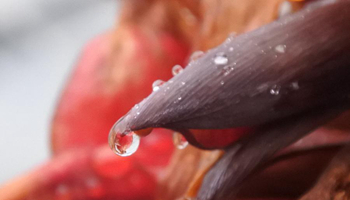WUHAN, Oct. 8 (Xinhua) -- An endangered species of fish in China can now be aided to breed, 16 years after it was believed to have lost the ability, local authorities said Saturday.
Dabry's Sturgeon, a class A protected fish in China, lost its natural ability to breed in 2000 due to water pollution and overfishing.
In an experiment by the Yangtze River Fisheries Research Institute (YRFRI), four females and six males were put into an environment simulating a natural river, where they lived for more than 10 days. One of the females laid 32,000 eggs and at least one male was involved in the fertilization. A total of 22 baby fish were bred.
"The fish in the experiment were artificially bred and no stimulants were used," said ichthyologist Wei Qiwei, a sturgeon expert with the YRFRI.
Hailing the breakthrough, Wei said the experiment showed that by adjusting the environment, the secretion system of the Dabry's Sturgeon could be stimulated to make mating possible.
"It is significant for the increase of the sturgeon population and the maintenance of natural resources and the environment," he added.










